|
Leonard (Len) George Fisher (1892 – 1916)
By Jonathan Sinfield |
|
|
Leonard (Len) George Fisher (1892 – 1916)
|
||||||||||||||||||||
|
Personal Leonard was born in the thatched cottage opposite Batford Mill on the river Lea in Harpenden, Hertfordshire on 2nd November 1892 (then in the Parish of Wheathampstead). He was the second of six children born to William and Emily Fisher (nee Chapman). His father was an agricultural worker and mother Emily was involved in hat making, sewing plait into men’s straw boaters. Leonard’s older brother was William Samuel Fisher (1890 – 1987) known locally as Bill. His other siblings were Annie (b 1895, d 1915), Lucy (b 1898, d 1914), Alice (b 1902, d 1967) and Arthur (b 1908, d 1974). Alice married Frederick Charles Lawrence in 1929. Both Bill and Leonard attended the school next to the Parish Church in Harpenden, now known as St Nicholas Primary School. During the boys childhood the family moved to Linces Farm Cottage, Ayot St Peter near Welwyn (1901 Census). Bill and Leonard had to walk the two miles to attend school & sung in the choir at Ayot St Peter under Canon Henry Jephson. Boys typically left school at the age of 12 having taken what was known as Labour Exams. After his school years Leonard worked at Linces Farm for a period of two years. The Family moved to Flamsteadbury (near Redbourn) where William (Leonard’s father) had become head man on a large farm. Pre WW1 years Bill in his memoires talks about how difficult it was for Leonard and many others to find work. He states “….. we were walking down the road one day, and I said to him “Why not join the Army? There will never be a War on in our time and you will have a job; much better than no work and no money”. |
||||||||||||||||||||
|
Army Career As the 2nd April 1911 census shows Leonard had enlisted in Hertford, into the 4th (Extra Reserve) Battalion the Bedfordshire Regiment, also known as the Herts Militia. At the time war broke out, Leonard, now with the 2nd Bedfords, was stationed in South Africa. The Bedfords had been there since the end of the second Boer War in May 1902. The Regiment was mobilised at Roberts Heights* near Pretoria on 10th August 1914. (*renamed Voortrekker Heights in 1939). They returned to Lyndhurst camp Hampshire in September and formed part of the 21st Infantry Brigade, 7th Division. They were under orders not to leave the camp, however like many, Leonard, ‘escaped’ the Redcaps to pay a visit his family in Hertfordshire. His South African Uniform caused quite a stir at St Albans Station as people tried to snatch his buttons as souvenirs. On 7th October 2014 the Regiment sailed to Zeebrugge, Belgium. Later that month they saw active service in the First Battle of Ypres suffering a considerable number of casualties. The Herts Advertiser, 23rd January 1915 cites a letter dated 9th January from Len then in D Company, to his brother William, “Bed's Terrible Losses - Redbourn Man’s Account of Very Hot Work and refers to bayonet charges and the valiant courage of the Battalion loosing 800 men from a total 1,100 in a matter of days …. I am serving with a Battalion which all Bedfordshire and Hertfordshire people should be proud of …”
Although outnumbered, the British soldiers held their line against the odds. The British defence east of Ypres, including a crucial, successful counter-attack at Gheluveld on 31st October 1914, was the final phase in the “Race to the Sea”, putting a stop to the possible return of the German Army into Ypres before the onset of the winter weather. From the Regimental War Diary we can see Leonard’s Company were in action at Becelaere (26/10), Zandvoorde (29/10), and Everzwijnhoek (31/10). At Ypres the 2nd Bedfords spent 18 days engaged in trench warfare. On the 9th January 1915, the date of the letter to the newspaper the Bedfords were under shell fire at their billets in Fleurbaix. In 1915 most Western Front offensives either by the British, French or Germans ended in failure. “The main reason was that defensive technology (trenches, barbed wire, machine guns, high calibre shells and quick fire breach loading artillery) all favoured the defensive and an army well dug-in and equipped could usually withstand any attack.” Communication also hampered any offensive force, many telephone lines were cut by shell fire and the field radio yet to come in to use, commanders had to rely on runners and pigeons. In terms of battles that the 2nd Bedfords were engaged in during the 1915 we know:
a) They were involved in counter-attacks
on 12th March at Neuve-Chapelle. Total
British casualties were 11,652 killed, wounded or
missing of which 86 were from the Bedfords. During the last quarter of 1915 Leonard was sent back to Languard England, to convalesce from enteric fever (severe typhoid). He attended his sister Annie’s funeral. This would be the last time he saw his brother, as William sailed to Mesopotamia with the Herts Yeomanry a few days later. In the summer of 2016 the Anglo-French offensive on the Somme was designed to take pressure off the embattled French armies at Verdun. On the ‘First Day’ (1st July) of the battle the British Army lost more casualties than ever before, or since, in a single 24-hour period (i.e. 57,470 of which 19,240 were killed). The 30th Division of which the 2nd Bedfords were part along with the 18th Division were the two most successful British Divisions on the day, taking all their objectives. |
||||||||||||||||||||
|
Prelude to the Battle of the Transloy Ridges (Le Transloy), October 1916. On the Somme during July 1916 the 2nd Bedfords had been involved in heavy fighting in Trones Wood (11th) and the taking of Maltz Horn Farm on the 30th, in conjunction with French 153rd Regiment (as part of a larger attack on Guillemont). By October 1916, the Allied armies on the Somme had gained around 7km of German trench systems and fortified villages, in return for a dreadfully long casualty list. However, with the weather turning to the traditionally wet northern European climate, Rawlinson’s Fourth Army was to mount their final offensive of the 1916 Somme battles which would become known as the Battle of Le Transloy. The preceding phase (The Battle of Morval) had resulted in the capture of the 3rd line of German defences, leaving one final objective the Transloy Ridge. Away from the fighting, on 30th September, at Vignacourt the 2nd Bedfords drew 1 – 1 with the 17th Bn, the King's (Liverpool Regiment), a final football game before both battalions would join the attack on Transloy.
Between the 4th to the 9th October the Bedfords had been billeted at Dernancourt. On the morning of 10th they left for Bazentin-le-Grand where they rested for 4 hours south of Mametz Wood, at 5pm the Battalion left to relieve the 20th Bn. Cheshire Regiment. They were heavily shelled twice on the way up to this relief. On the 11th October they took over the frontage from the 17th Bn.Liverpool Regiment. Relief completed at 3.30pm. 5 other ranks were killed, 7 wounded. About midnight the Battalion received orders they would participate in an offensive attack on Le Barque, Ligny and Ligny Tilloy (89th Infantry Brigade Operation Order No. 59). |
||||||||||||||||||||
|
The Plan Attack by the 4th British & 6th French Army on Gird Trench – 12th October 1916. Four mile front between Eaucourt & Bapaume. The Bedfords formed a constituent part of the 89th Infantry Brigade, 30th Division, 4th Army.
|
||||||||||||||||||||
|
In the German trenches in front of them were believed to be 6th Bavarian Reserve Division & the 6th Active (Brandenberg) Division. From a Bedford’s perspective the planned attack was in 4 waves with a distance between each wave of 100 yards. At 11am on the 12th a party of Germans (2 Officers and about 50 men) appeared in Gird Trench without arms, they made signs of surrender, but hesitated to come over for fear of being shot, 2nd Lieut. H.G. Fyson however went out and spoke to the German Officer who got back into the trench, but just as he got in, someone fired a shot at him, after this the Germans did not come over. At the same time Lt.Colonel H.S. Poyntz had been wounded whilst explaining the plan of attack to Company Commanders. Readers may be aware both H S Poyntz and his brother E S M, also in 2nd Bedfords, both played first-class cricket for Somerset. At 2:05pm the attack commenced with the advance of C & D Company. The first wave came under terrific machine gun & rifle fire causing many casualties. They progressed to within 50 yards of Gird Trench. 2nd Lieutenant Harold George Fyson was killed at 2.10. The Liverpools on the Bedford’s left were held up. To give some idea of the intensity of the fire that they faced, after only 25 minutes of the attack being launched the 17th Liverpools, advancing alongside the Battalion, had lost 13 officers and 409 men and the Bedfords had lost 5 officers and over 100 men. The two Companies on the right “C” and “D”, made better progress and passed over the southern end of Gird Trench towards Bayonet Trench. However they also came under heavy machine gun fire from Gird Support Trench and got held up. On “B” Company reinforcing them they pushed on again and captured 200 yards of Bite Trench, which was a shallow communication trench and much blown in and running perpendicularly from the front line across neutral ground towards Bayonet trench and to within 50 yards of the later. Fighting had been especially fierce on the Bedfordshires’ right half of the line after the British barrage had been ‘completely ineffective’ there, leaving the southern half of Gird Support ‘full of Germans’. Seeing that Gird Support Trench and Bayonet Trench were very strongly held and being under very heavy enfilade fire from Gird Support Trench, Captain E.S.M.Poyntz and Lieut. Ronald Hopkins decided it was useless to attempt to get further, so they dug in along the captured portion of Bite Trench. This they did under heavy enfilade fire, but by 5 p.m. they had well consolidated their ground. The total gains of the day were about 200 yards of Bite Trench and about 70 yards of Gird Trench. The Battalion were the only Battalion to gain any ground on the whole of the Corps Front, all the others having to withdraw to their front trenches. Having been relieved by the 18th Bn.Kings Liverpool Regiment on the night of 13th October the Battalion withdrew to Reserve Trenches West of Flers arriving at 7.30 a.m. October 14th. The Bavarians who had occupied the German trenches during the attack on October 12th were relieved by Saxons. Bite Trench, which ran north-south, had been captured, but not the main objectives of Gird and Gird Support Trenches, save 70 yards of Gird Trench. From a battalion of a 1,000 men, 250 Bedfords were listed as dead, wounded and missing as a result of this attack. Leonard George Fisher (Len), who has no known grave, was one of the Bedfords who made the ultimate sacrifice. |
||||||||||||||||||||
|
Leonard Fisher’s passing was reported in the Herts Advertiser on the 18th November 1916, and was reprinted in The Luton News And Bedfordshire Chronicle …..
Pte. L.G. Fisher – Flamstead Bury Lad Falls On The Somme After fighting in France for two years Pte Len G Fisher, Beds Regiment, son of Mr. Fisher Flamstead Bury, Redbourn, was instantaneously killed on October 12th when taking part in an attack on a German trench on the Somme. A sergeant friend of deceased writing to the bereaved parent says “He died doing his duty a brave and noble lad. We reached a part of the trench we were fighting for and it was while holding on to that piece of ground that your son was killed. He was hit in the head by a bullet and died an almost painless death. On behalf of the company and myself I extend to you out heartfelt and deepest sympathy” Private Fisher joined the army in 1911 and went out to France with the Expeditionary Force in 1914. Some time back he was invalided home suffering from enteric fever but returned to the front last August.” Posthumously he was awarded the British War and Victory medals as well as the 1914 Star. His mother Emily received a War Gratuity of £12 10s in October 1919 for the loss of her son. |
||||||||||||||||||||
|
During World War 1 The 2nd Bedford’s Other Ranks lost a total of 1,322 men, over 20% (270) having been born in Hertfordshire. 8 men from Harpenden, 8 from Redbourn, 5 from Flamstead, 4 from Wheathampstead and 13 from St. Albans were among the fallen. William Ginger and Laurence Frederick Jackson, both residents from Flamstead lost their lives at the Battle of Le Transloy on the same day as Leonard. |
||||||||||||||||||||
|
Sources, acknowledgements & sincere thanks:
Martin G. Deacon, Bedfordshire & Luton
Archives & Records Service, author The 2nd Bedfords in
France and Flanders 1914-1918 |
||||||||||||||||||||
|
Compiled by Jonathan
Sinfield, grandson of William Fisher, Harpenden, May
2016. |
||||||||||||||||||||
|
Appendix 1: Herts Advertiser page 5, 23rd January 1915 REDBOURN. "Bed's" Terrible Losses Redbourn Man’s Account of Very Hot Work Mr. W. Fisher, jun., Flamsteadbury Farm, Redbourn, has received the following letter from his brother Len, who is in "D" Company, 2nd Bedfordshire Regiment:- "January 9th. – I am serving with a battalion which all Bedfordshire and Hertfordshire people should be proud of …. Our first engagement was at Ypres, where we had it very stiff. Our division was outnumbered by the Germans nine to one, but anyhow, we held them back for three weeks till we got reinforcements up. My battalion was in reserve for the -------- (21st?) Infantry Brigade, and we had a very hot job to do to keep the other battalions reinforced. We had to advance in daylight under very heavy shell fire, and my platoon and another had to go to the Scots Fusiliers, as they were getting cut up terrible (22/10?). We reached their trenches all right with only a few casualties, and there was a fine sight to see. The Germans were advancing to our trenches about a half-a-mile off, and they were just like flocks of sheep coming towards us. We were firing rapidly for about two hours, but still they came in swarms, and by this time it was getting dark, and still they were advancing, and they got within two hundred yards of our trenches, and they charged us with the bayonet and we had to retire in to a wood (26/10?). But we all formed up and did a counter-attack and drove them out of our old trenches at the point of the bayonet. And I must say they are a poor lot of chaps to face the cold steel … I could tell you a lot more, but I have not the time to write. I am sorry to say that all that came out of the firing line of my battalion were one officer and three hundred men out of 1,100." Comment: Looking at 2nd Bedfordshire Regiment’s War diary on the web (http://www.bedfordregiment.org.uk/2ndbn/2ndbtn1914diary.html ) On the 9th January the 2nd Bedfords, still under shell fire were billeted at Fleurbaix. Len is referring to the First Battle of Ypres (October 1914). The war diary entry of 26th October 1914 refers to D Company under command of Captain William .E. Wetherall moving from trenches right of the Guards Brigade right flank in to the woods and a subsequent reoccupation of the trenches. This attack was on the village of Becelaere. This may be the incident Private Leonard (Len) George Fisher (Service Number 9821) is referring to. On the 29th October the Battalion counter attacked the Germans from Zandvoorde on the right of Yorkshire Regiment, 22nd Brigade under heavy shell fire, Captain Wetherall was wounded. On 31st October fighting for the 2nd Bedfords continued at a small fir wood south of the Menin Road near Everzwijnhoek, the war diary (like the 29/10) reports “the losses were very severe on this day”. On the 6th November 1914, the Bedfords marched the 17 miles from Ypres to Locre reportedly tired from 18 days of trench fighting and “mud on the cobbles”. The German siege of the Belgium town of Ypres now (now known by its modern Flemish name, Ieper) lasted four years. 2nd Bedford's Great War Blog: 31/10/14
2nd Battalion: First Battle of Ypres - retirement from
the Geluveld-Zanvoorde
Road to
the Menin Road
30/10/14 The capture of Zandvoorde outflanked the Bedfords’ brigade which was forced to retire, covered by the Bedfords. They have now taken up a line behind the road from Geluveld to Zandvoorde and have dug in. There will surely be another German attack tomorrow, Halloween.
29/10/14 28/10/14 2nd Bedfords Waiting, methodically shelled during the day The adjutant, who yesterday explained the strategic situation at Ypres to us tells us that it was expected that during the day they would receive an attack by the XXVII German Reserve Corps in an attempt to break through the lines, but this did not materialise. The Battalion was methodically shelled during the day, however, including the headquarters and reserve company in the rear. Remarkably only one man, Private Ernest Barker from Luton, has lost his life, though others have been wounded. A whole platoon of A Company had its trench blown in on it and the forty or so men had to be dug out. |
||||||||||||||||||||
|
Appendix 2: Family Tree (extract)
On 26th March 1955 Marjorie Manley married my Father Richard Sinfield at St Nicholas Church Harpenden. |
||||||||||||||||||||


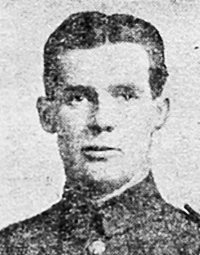
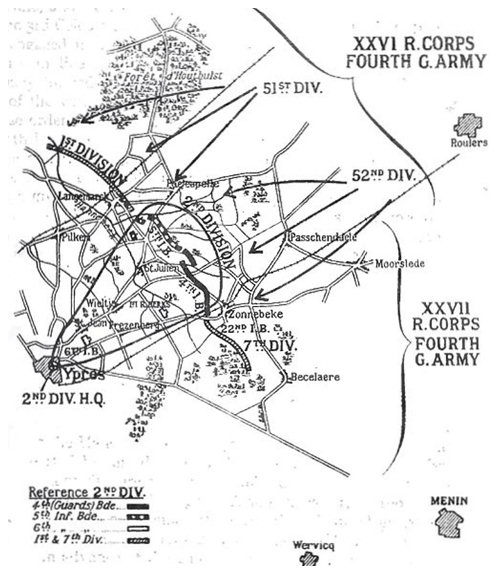 The
First Battle of Ypres (19th October - 22nd November
1914) began to the east and south east of the city in
mid-October 1914. It was the first of many long battles
during the Great War to hold or win possession of this
ancient city and its strategic route to the French and
Belgian coastal ports.
The
First Battle of Ypres (19th October - 22nd November
1914) began to the east and south east of the city in
mid-October 1914. It was the first of many long battles
during the Great War to hold or win possession of this
ancient city and its strategic route to the French and
Belgian coastal ports.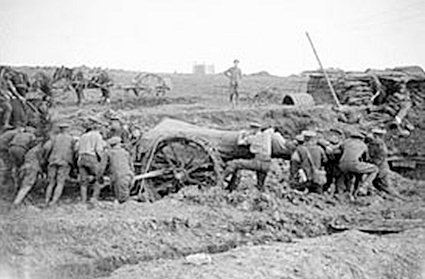 The
battle started on 1 October, with Eaucourt L’Abbaye
falling to the 47th (London) Division. A renewed assault
on the 7th saw Le Sars fall to the 23rd Division but no
progress was made elsewhere. By this time, the weather
had already turned and the battlefield, having been
pounded by artillery and the boots of millions of men
for months, was nothing more than a quagmire. Desperate
for the breakthrough that would never actually happen, a
last series of attacks were launched on the 12th, 18th
and 23rd October, this, despite the protests of many
senior commanders who felt it would prove a fruitless
exercise.
The
battle started on 1 October, with Eaucourt L’Abbaye
falling to the 47th (London) Division. A renewed assault
on the 7th saw Le Sars fall to the 23rd Division but no
progress was made elsewhere. By this time, the weather
had already turned and the battlefield, having been
pounded by artillery and the boots of millions of men
for months, was nothing more than a quagmire. Desperate
for the breakthrough that would never actually happen, a
last series of attacks were launched on the 12th, 18th
and 23rd October, this, despite the protests of many
senior commanders who felt it would prove a fruitless
exercise.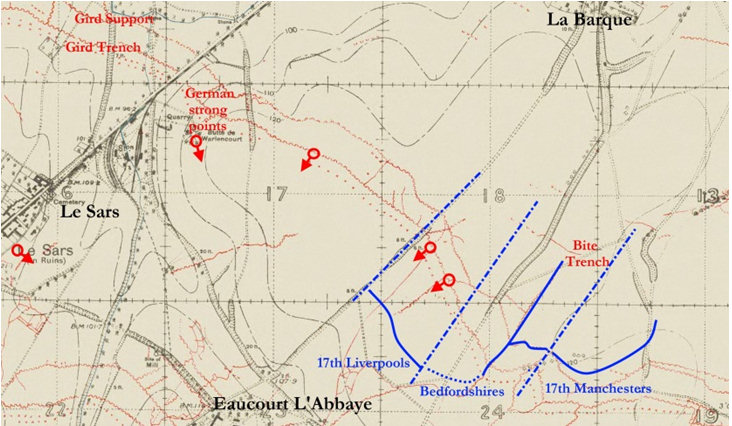
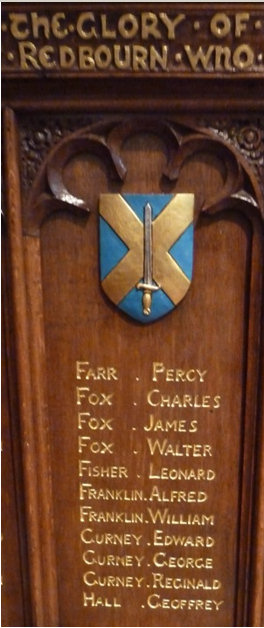 Obituary
Obituary